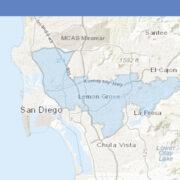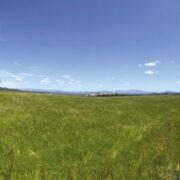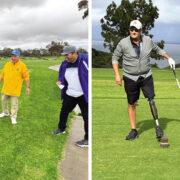TWO weeks before Jose Antonio Vargas landed on the cover of TIME Magazine, I saw him at the UniPro (Pilipino American Unity for Progress) summit, where he was one of the keynote speakers. He had time to spare before it was his turn on the podium and he asked me if I wanted to grab coffee with him.
As we walked towards the nearest Starbucks on Second Avenue, he began chatting. He told me about this top-secret project he was working on and he said it was bigger than what he did last year for the New York Times Magazine. He was visibly excited.
We briefly talked about other things-from Manny Pacquiao and his stance on the RH bill in the Philippines (and his stand on same-sex marriage) to Jessica Sanchez and her amazing American Idol journey to the Fil-Am community at large.
He talked about his travels in the past year and his work at Define American.
He was definitely inspired.
Two weeks later came the big news. TIME’s Marketing Department released a photo of the cover for that week’s issue: and there he was, front and center, Jose Antonio Vargas. He was joined by 35 other undocumented people from 15 different countries share the cover, essentially becoming the faces of America’s undocumented immigrants.
It is safe to say that every journalist worth his (or her) salt here in the United States dreams of seeing his byline on Washington Post, New York Times and TIME. As a young journalist, Vargas entertained that dream.
Because of his unrelenting work ethic, the now 31-year old advocate was able to achieve his journalistic dreams one after the other.
“Déjà vu,” Vargas quipped as he welcomed us to his apartment one Thursday evening.
Last year, he welcomed us to his place for an interview a couple of days after his coming out as an undocumented immigrant article on the New York Times Magazine was published. He was quite different then, his demeanor, the manner in which he spoke and the general feeling surrounding him.
Indeed, what a difference a year makes.
“A year ago, I was an utter mess. I was out of my element. This time, I woke up this morning, I put Beyonce on and I was smiling. Tomorrow, when this is around the country and every undocumented person around America is looking at this and saying ‘That’s me’ will probably be the best day of my life,” Vargas said.
It was around late March this year when Vargas approached TIME and proposed an article about the first anniversary of his coming out as undocumented in America. Rich Stengel, TIME’s managing editor thought it was a good idea for Vargas to share his experience of criss-crossing the United States to talk about immigration.
“Professionally, this is the best thing I have ever done. The photo shoot was probably one of the best days of my life. I was very, very happy with it,” Vargas told the Asian Journal. “People have been asking me how I measure success,” he added, pausing for a moment and grabbing the issue of the magazine, “This is success.”
Last year when he started Define American and set the goal to elevate the conversation on immigration, people raised their eyebrows. “This is exactly what I am talking about, we are elevating the discussions,” he said.
As part of his research for the article, Vargas had to call the Immigration and Customs Enforcement people to ask them about his own case.
“I called ICE and I asked them – Do I have a case, if so what’s my case number. Are you going to deport me, why or why not? How do you make those determinations? They wouldn’t comment,” he said.
In one statement, ICE said that they had no proof of encountering Vargas.
“I am not saying this to dare them. I am here telling them, let’s deal with this. I am 31 years old, I have not left this country since I was 12. I want to see my mom in the Philippines. I want to travel. I want to go to Canada. I want to live my life. I don’t know how long I can keep doing this,” he added. “The fact that I personally haven’t been dealt with and that more and more people like me coming out about our status, I think that signifies a turning point and that our politicians and policy-makers are really struggling what to do with us.”
The hard part now according to Vargas is not knowing what the government will do to them.
“We’re at the mercy of politicians who frame this issue in an incredibly simplistic way,” he said shrugging.
Sometimes he gets emails asking him to sign a petition to stop their own deportation. That breaks his heart.
“In some ways I think have survivor guilt,” he quipped.
He says he gets hate mails all the time, but he has learned to deal with them properly.
“If you want to have a conversation, you must come with more than ‘You’re illegal’. That will not get us anywhere,” he said.
Vargas has been living in the United States for almost 20 years now and he says he is not moving anywhere anytime soon.
“Until they drag me out of here, I am not leaving. Now, if they give me green card or a visa, I’d go to Cebu or Boracay. I really want to travel, and write while I travel,” he shared.
Turning a little wistful, Vargas remembered his family and relatives back in the Philippines.
He remembers family and relatives there calling him Pepeton, a portmanteau combining ‘Pepe’ from Jose and ‘ton’ from Antonio.
“My Auntie Aida once told me, ‘Ton, don’t you think this is a blessing in disguise?’ I was like, ‘What!?’, then I remember pausing to think about what she just said. Would I have been as hungry or as creative? I don’t know, I don’t think so,” he said.
Indeed, looking back, Vargas thinks that he was motivated to work a little harder than everyone else because he was undocumented, and he wanted to prove that he can be a good citizen of this country.
When he found out that he was writing the TIME cover story, he called his Lola and told her what was happening. “She didn’t really understand.
The first thing was that she was worried and asked ‘What are you trying to do?’ I told her this was a good thing,” he said.
The past two weeks prior to the magazine’s publication were almost surreal for Vargas.
The night before the magazine was sent to printing press, he was at TIME Magazine’s office near Times Square for about 12 hours going through line by line by line looking at the spellings, the photos, the videos.
“I am incredibly lucky to be in a place like this. I wanted this so bad and we got it,” he said.
From TIME’s editorial offices on 50thSt and Sixth Avenue, Jose walked 40 blocks south downtown to his apartment, with a dummy copy of the magazine. “It was a beautiful walk, the weather was great,” he said.
The Pulitzer-prize-winning journalist knows that immigration is one of the top issues faced by the Filipino community in America today and he hopes that through his advocacy and Define American, he is able to elevate the conversation on the topic.
“This is for all of us. Your picture may not be here but if you are in this situation or you are a TNT as we call it in the Philippines, you are here, you’re in this photo somewhere,” he said as he looked at his copy of the magazine.
(Photos by Momar G. Visaya and AP)
(balikbayanmag.com)
(NYNJ Mag July 13, 2012 pg.2)




